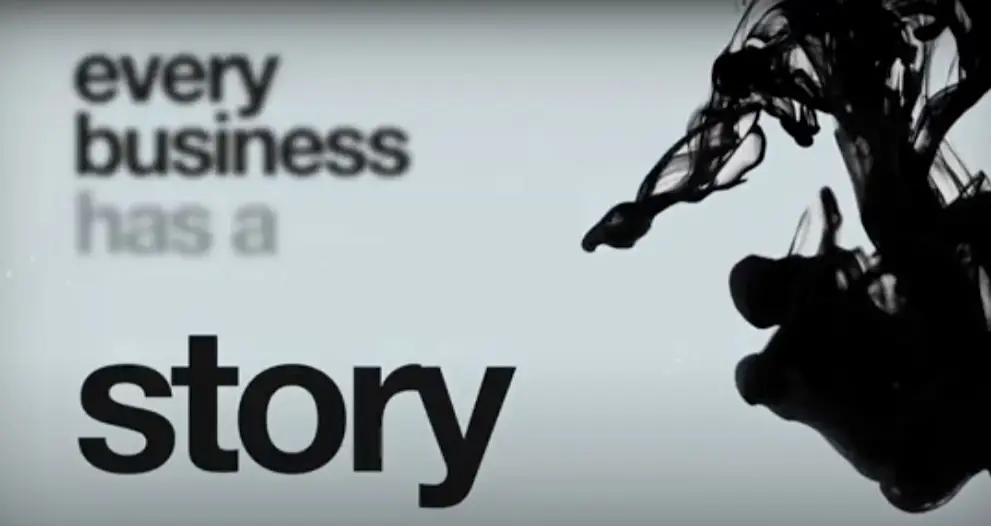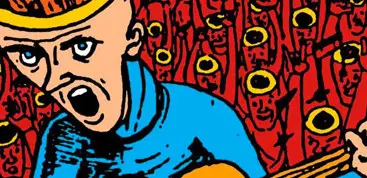The Five Elements of an Interesting Business Story
Every business, large or small, local or global, has an interesting story to tell. Unfortunately, this story is usually buried under a steaming pile of marketing cliches and robotic business language.
A great story can work to help potential customers pay attention, connect with your company on a deeper level, and spread your message virally through word-of-mouth. A business story can be told in many different ways. Whether it is through text, speech or video, the elements will stay the same.
Going beyond the basics
Scan any brochure or about page online, and chances are that you will soon be greeted with a formulaic mission statement or cv-style founder biography. If you are lucky, you’ll learn the basic who, what, where, when, why and how of the company. It is usually very brief, and focused more on the who, what and where and when rather than the why and how. What is wrong with that? It’s more of a news story than a narrative, and usually it will bore you to tears.
Making it interesting
If you are attempting to market something, if you don’t at least have interest, you fail. You may be thinking: “I sell socks, this isn’t The Lord of the Rings.” You are right. It isn’t Lord of the Rings… It’s Lord of the Socks. Establishing a good business story will permeate through your company and can buffer the establishment of real company culture. Nobody will voluntarily remember a mission statement or a set of guidelines. They will remember a story. Not only will they remember it, they will communicate it more willingly due to the nature of a story.
The elements of a business story
Every story has five basic elements: Characters, settings, conflict, plot, and theme. Your story may not seem too exciting, but it can be very interesting when the right elements are revealed. In building a story for your business, it is best to start with the basic story elements, and go from there.
1. Character: Who is involved?
Who is behind the company? Where did they come from and what characteristics do they have? Are there any events or circumstances that helped shape who they are today or became the reason for starting the company? If the company was a character itself, what kind of personality or charateristics does it have? Is it old and wise with plenty of trials and tribulations behind it? Is it out to change the world like a superhero? Is it an enemy of the status quo, disrupting its industry at every turn. Think about how this character (whether entity or individual) has changed or had revelations in the past, and how does this change relate to their current philosophy?
For instance, your sock company might have been founded by a local entrepreneur who was originally a traveler/adventurer/mountain climber that started in the sock business because he couldn’t find a double reinforced sock to support his ankles on long trips. The business has grown to become large but the founder has refused to change the way he made the original socks despite enticing profits from mechanized processes. This is a stubborn, old fashioned business started by travelers, not businessmen. There’s your character.
2. Setting: Where and when is the story taking place?
This one is easy, but can become complex very quickly. Setting is essentially the time and place the story takes place. Where is this business located and what area does it serve? Is it set to go global, or is it confined to the town it is in? Where and when did it start? Where is it now and where does it hope to go in the future?
In a business story, setting isn’t always a physical location or time. What part of the industry does your business reside in (any niche?). How does the “landscape” look in the industry? Is it growing or shaking out? How does it relate to other businesses both competitive and complementary?
3. Conflict: What problems are happening?
Every good story needs a conflict in order to be interesting and move the story along. They can be external or internal. Your customer is facing some kind of conflict. Otherwise, they wouldn’t need you. Your business is meant to solve a problem. What is that problem? In the case of the sock company, nothing was available for the traveler who needs everyday support without having to wear a special support wrap.
Your business also faces conflicts in the decisions it makes. Should you expand or stay small? Should you diversify your offerings, or stay focused? Should we outsource this process or keep it in-house? What are the pros and cons of these decisions? This is internal conflict that makes for great drama: Socks are easier to make if automated, but too many quality issues can arise if they are not tested. The company had to make the decision to stay with handmade, despite the temptation of healthy profits.
4. Plot: How do these problems get solved?
The plot is the combination of the above elements. Within the setting, how do the characters overcome the conflicts? In other words, you may solve a problem in this space, but how do you do it effectively? Given the circumstances, notions, challenges and character history, how does your company do what it does better than the competition?
The plot helps you establish your “line in the sand” and gives you an opportunity to communicate your unique competitive advantages in a compelling way. Think about how interesting your business could be when it is fighting a heroic battle against all odds!
In a world of ill-fitting and cheaply-made socks (outsourced with low-quality cotton and non-reinforced seams, as well as no foot support), one company has recognized this (visionary leadership that came from another industry when they saw a problem) and emerged from the ashes of it’s past (a former shoe manufacturing business that went south) to change the idea of foot protection as we know it (hand-stitched socks with reinforced arc-support put through 3 inspections), and possibly change the world as we know it (Millions of people all over the world are living in pain when a simple support is all they need.). This may seem silly, but are you starting to see where this can go?
5. Theme: What is the point?
The theme answers the “why” question. After your audience hears your epic, what are they left with? This is often referred to as the moral of the story. It really has nothing to do with morals though. It is a principal your audience can relate to. It can be as broad or specific as you want, but it must always be relevant to your audience. One example could be: “You can’t do everything the best, so focus on one thing and do it really well so that you can be successful.”
For the sock story, it may be: “Don’t overlook the small things (socks), because they can make a big difference in life over the long run”. The theme can run even deeper than that. “Don’t accept things the way they are, because if nobody questioned the status quo, we would still be living in the stone age.” might be a relevant theme that someone can identify with
This isn’t a tag-line, and doesn’t necessarily need to be overtly stated. Your story can contain much more than one theme. This is what will make your story resonate in your audiences mind, and breeds loyalty that can’t be broken easily. People identify themselves often by their purchases. Give them a reason to choose you with a meaningful theme to your company story.







